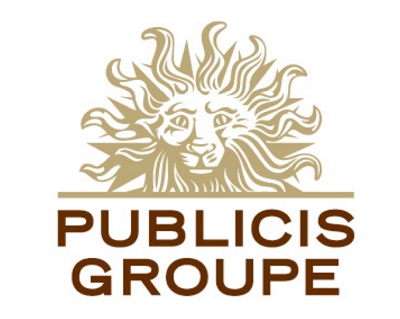ZO: Global mobile advertising spending to overtake desktop in 2018
In 2018, mobile advertising will overtake desktop and account for 50.2% of all internet advertising, according to ZenithOptimedia (ZO)’s new “Advertising Expenditure Forecasts”. Mobile advertising will total $114BN in 2018, up from $50BN in 2015, and will be larger than all other media except for TV (which will total $215BN, up from $206BN in 2015).
Mobile advertising is responsible for almost all of the growth in global adspend. ZO forecasts it to grow at an average rate of 32% a year between 2015 and 2018, contributing with 87% of all of the new ad dollars added to the global market during the mentioned period.
ZenithOptimedia forecasts desktop internet advertising to peak at $114BN in 2017, before falling back slightly to $113BN in 2018, as adspend migrates from desktop to mobile.
- Programmatic advertising to represent 60% of digital display in 2016
Programmatic advertising will account for more than half of digital display advertising (53%) for the first time in 2015 and its share will increase to 60% in 2016, ZO’s new “Programmatic Marketing Forecasts” reveals. Programmatic advertising has risen to dominate the digital display market in just a few years, after accounting for just 12% of display adspend in 2012. Programmatic adspend grew from $5BN in 2012 to $38BN in 2015, at an average rate of 100% a year. Its growth is slowing down as it extends its dominance of the display market, and ZO expects it to grow another 34% in 2016 and 26% in 2017, moment when two thirds of global display will be programmatic.
The US is the biggest programmatic ad market by a long distance, worth $16.8BN in 2015 and accounting for 44% of global programmatic adspend. The UK comes second, worth $2.6BN and accounting for 7%.
- Internet to overtake television in 2018
TV is currently the dominant ad medium, with a 38% share of total adspend in 2015. In 2018, ZO expects the internet to overtake TV and become the largest single advertising medium. Looking at the ad market as a whole, ZO appreciates TV’s share peaked at 39.7% in 2012 and estimates it at 37.7% in 2015, expecting it to fall back to 34.8% by 2018.
TV’s fast loss of share is blamed on the raise of paid search. ZO estimates TV will account for 44.7% of display expenditure (i.e. excluding internet classified and paid search) in 2015, and 42.9% in 2018.
- Audiovisual advertising is becoming more important for brand building
Audiovisual advertising as a whole – television plus online video – is gaining share of display advertising. TV offers unparalleled capacity to build reach, while online video offers pinpoint targeting and customization of marketing messages. Both are powerful tools for establishing brand awareness and associations. ZO estimates audiovisual advertising will account for 48.4% of display advertising in 2015, up from 44.1% in 2010, and wll reach 48.9% in 2018.
- Digital editions to help magazine publishers to increase total ad revenues by 2% in 2016
Advertising in printed magazines is in decline all over the world and ZO estimates, for US, that print magazine ad revenues will shrink by 1.8% in 2016. Also, it is expected for US magazine publishers to generate 20% of their revenues from digital editions, and this type of revenues is growing rapidly. With the digital revenues taken into account, ZO predicts magazine publishers will see an overall 1.8% increase in total revenues in 2016.
- Quadrennial to boost global adspend by $6.1BN in 2016
The international ad market has been stable since 2011, growing at about 4%-5% a year, and ZO expect the growth to continue until at least 2018. Next year will be a relatively strong year, with 4.7% growth in global adspend, up from 3.9% in 2015. 2016 is a “quadrennial” year, when ad expenditure is boosted by the US presidential elections, Summer Olympics and UEFA football championship in Europe.
According to ZO, the US election will provide a net $3.2BN boost to US adspend, especially to TV and internet advertising, while Olympics will lift global adspend by $2.0BN, especially to TV and outdoor. UEFA Euro 2016 will boost adspend by a net $0.9BN, also concentrated in TV and outdoor, mainly in Europe but also in Latin America and Asia Pacific.
- India, Indonesia and the Philippines are hotspots of adspend growth
Adspend growth is slowing down in three out of the four BRIC markets that were responsible for much of last decade’s ad market expansion. Between 2005 and 2010 adspend grew at an average rate of 10.7% a year in Brazil, 10.3% in Russia and 16.9% in China. Brazil and Russia are now in recession, and China is slowing down, and between 2015 and 2018 we expect annual growth to slow to 3.5% in Brazil, 5.3% in Russia and 7.5% in China. Russia and China will continue to beat the global adspend growth rate, however.
The fourth BRIC market – India – continues to combine rapid growth and large scale, making it a distinct hot-spot of adspend growth, together with Indonesia and the Philippines. These markets are benefiting from sustained, healthy economic growth and strengthening personal consumption. These are the only three markets in which adspend is growing at double-digit annual rates and will expand by at least $1BN between 2015 and 2018: ZO forecasts the Philippines to expand by $1.2BN over this period (at a rate of 13% a year), India by $3.0BN (also 13% a year) and Indonesia by $4.1BN (17%).
Growth of the global ad market is being driven by advances in technology, especially mobile and programmatic tech. But television remains by far the most important channel for brand communication, and online video, its digital offshoot, is increasing the audiovisual share of global display advertising.
Steve King,
CEO ZenithOptimedia Worldwide.






